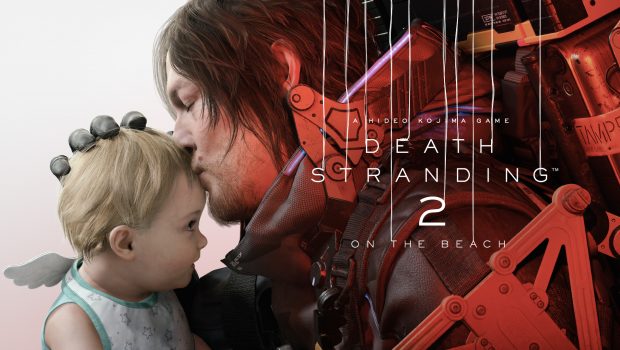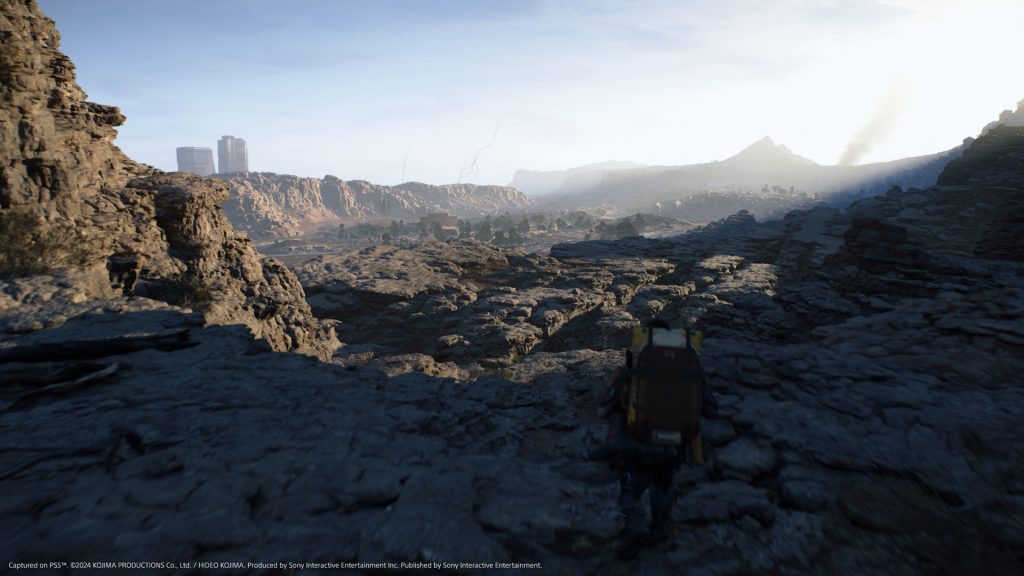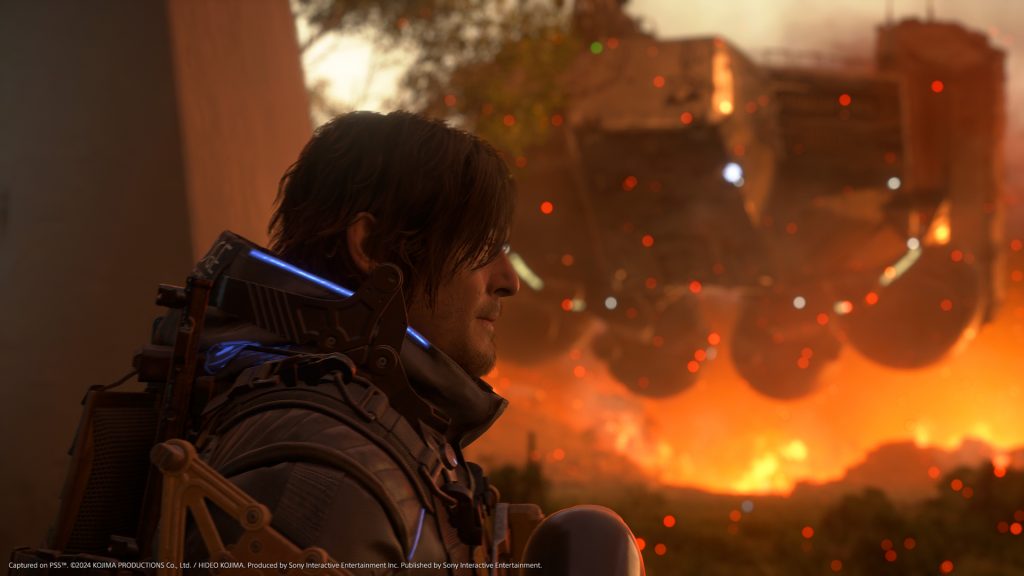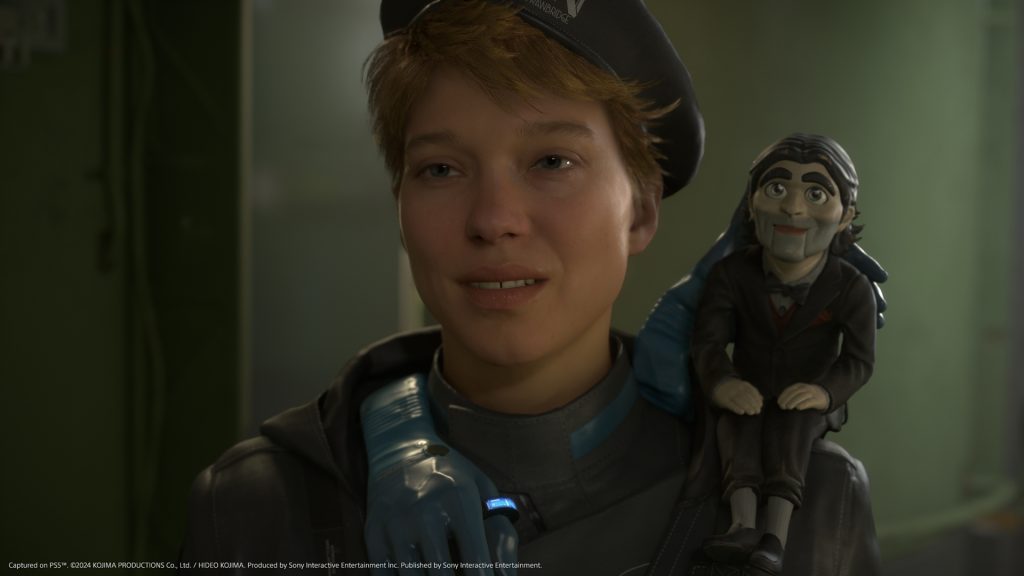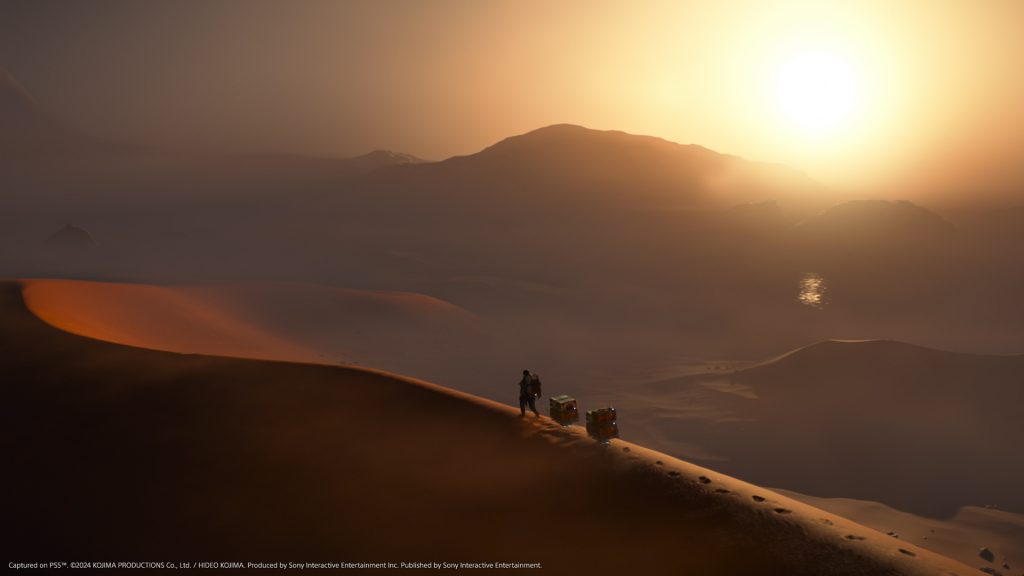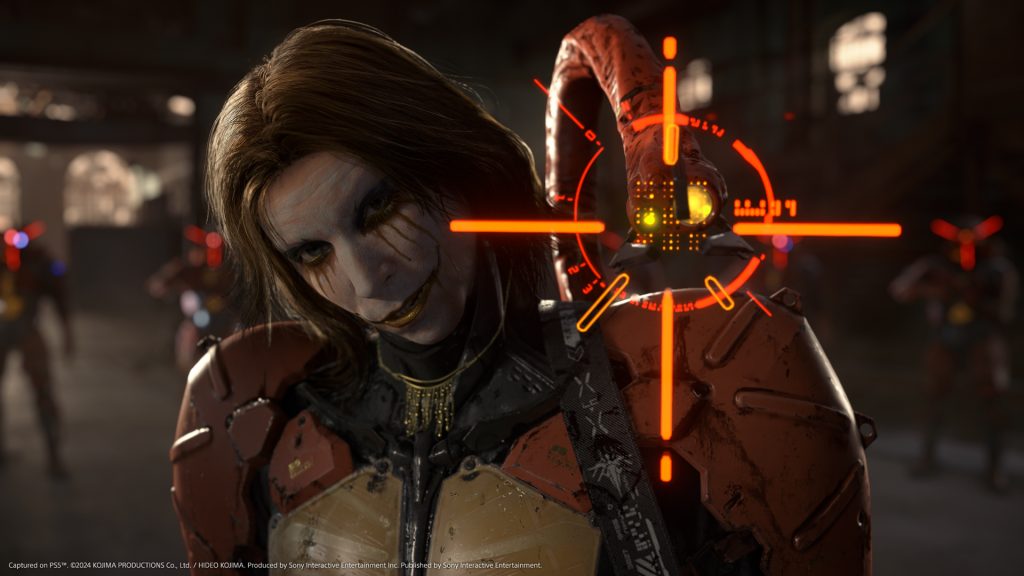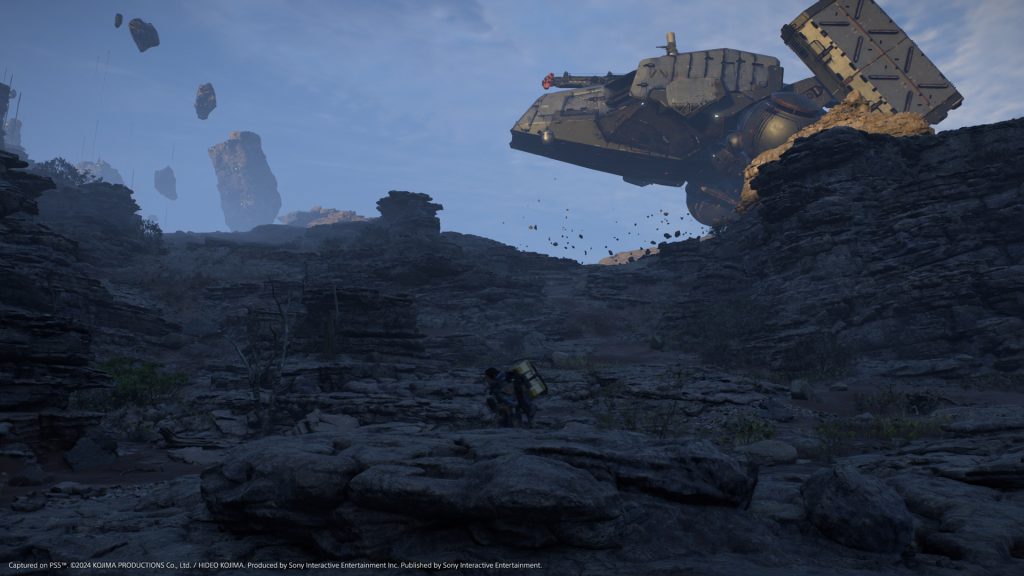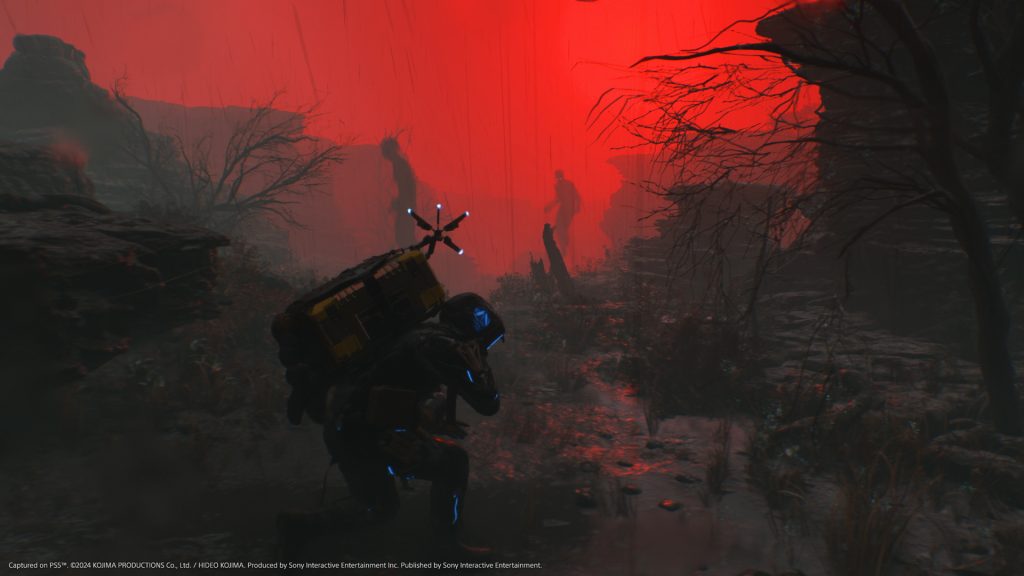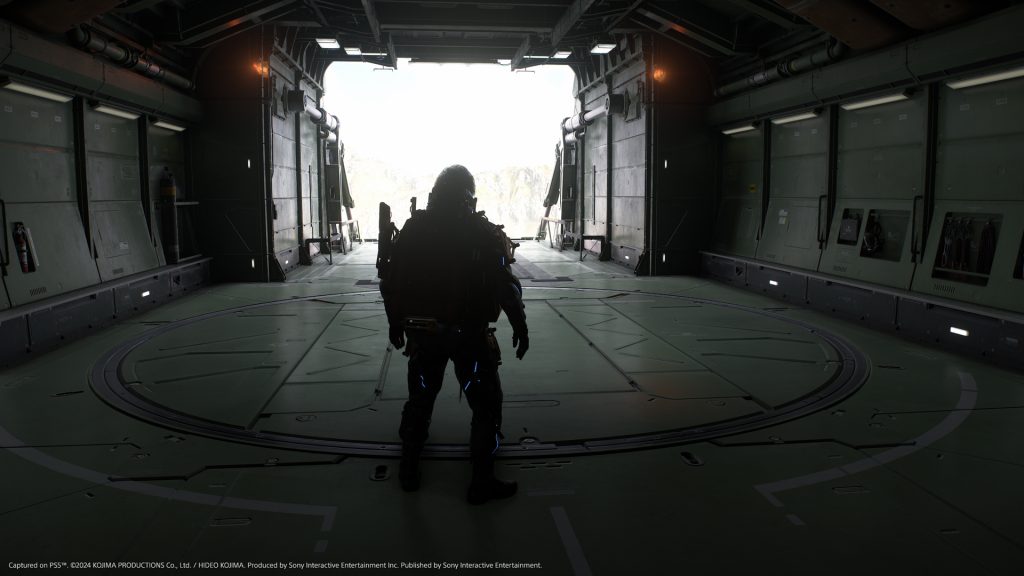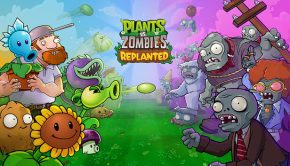DEATH STRANDING 2: ON THE BEACH PS5 Review
Summary: Kojima Productions have done it again, producing a game that is as engaging as it is strange while improving on the mechanics of its predecessor.
4.6
Strange & stunning!
2019s Death Stranding was Kojima Productions first release after legendary founder Hideo Kojima was unceremoniously… released(?) from Konami in 2015.
It was a polarising title due to its unconventional gameplay and a story that was out there, even by the standards of the Metal Gear Solid director.
Despite being relatively late to the Death Stranding party, not picking it until over a year after launch, it was a game that I thoroughly enjoyed and further cemented Hideo Kojima as my favourite creative in the video game industry. Now, six years later, its sequel Death Stranding 2: On the Beach is upon us, and this time I’ve gone all in from the very beginning.
Like all of Kojima’s work, Death Stranding 2 is heavily story-focused, though it isn’t as in-your-face about it as some of his other works. Consequently, I’m going to be deliberately vague when discussing the narrative beyond the general plot to ensure that this is a spoiler-free review.
The sequel follows on from the ending of the original game, taking place roughly eleven months later. Sam, once again played by Norman Reedus, is trying to live a quiet (no pun intended) life in the middle of nowhere. His world is turned upside down and he’s dragged back into the life of a porter. Only this time his journey sees him travelling across the Australian continent as he seeks to bring its inhabitants into the Chiral network.
Along with Reedus, many of the original cast reprise their roles in On the Beach. Most notably Léa Seydoux returns as Quiet, and Higgs, the original game’s primary antagonist, is brought to life by Troy Baker once again. These are joined by a varied and eclectic collection of new and old characters, most of which are portrayed by well-known actors, and all do a fantastic job of bringing their respective characters to life. Troy Baker steals the show, however, with his portrayal of Higgs this time around being his best work to date, in my opinion.
You can tell when an actor is enjoying a role, especially when they get to play the villain. Baker leans into Higgs’ character and hams it up, resulting in a character that resembles Far Cry 4’s Pagan Min (coincidentally also played by Baker and a performance that doesn’t get celebrated anywhere near enough, but I digress) by way of Darth Vader. I was pleasantly reminded of Raul Julia’s portrayal of M. Bison in the 1994 Street Fighter film, the absolute best thing about that movie. A charismatic character, capable of rational thought and making interesting points, while simultaneously chewing on the scenery in the best possible way and always ramping up the spectacle, visibly loving it at the same time.
The story itself took around 45 hours to get from intro to credits, with maybe five to ten hours of that spent enjoying the open world, taking on side orders, and generally taking everything in.
Death Stranding’s moment-to-moment gameplay was what caused some division when it was first released. Sam is a porter, you see, which boils down to him being a delivery boy. Delivering packages for the world’s inhabitants was, and still is, the name of the game in Death Stranding 2. Sam takes on an order from a client and then must deliver a cargo of some sort to a recipient. Generally, the group issuing the order will present the cargo immediately, but occasionally it needs to be picked up from elsewhere first, or sometimes ‘recovered’ from enemies, or just located and picked up due to it being lost somewhere in the world.
This being a post-apocalyptic world, taking place after the Death Stranding, an event that brought ghostly creatures called BTs into existence, the landscape is relatively barren and seemingly devoid of life. The original game especially had a very liminal feel to its settings. A strangely beautiful portrayal of the United States that is almost entirely devoid of life, or even any signs of former life aside from a few things here and there.
Death Stranding 2 continues this feeling of being in a liminal space, the Earth hasn’t recovered from the cataclysmic event that put all of this in motion. Despite this, Australia feels like a world that was once lived in. There are a lot more ruined buildings and towns, dilapidated highways, and abandoned vehicles strewn around. Consequently, it gives a far better impression that at some point in the past, things used to be normal and that something has happened. Other porters can be spotted in the wild from time to time and there are even a few animals around that are doing their best to survive.
The environment itself plays a larger part in the primary gameplay loop, too. Along with Timefall, the rain that rapidly ages anything that it comes into contact with, there’s now a whole host of other environmental and weather effects that crop up throughout the game. Sand and dust storms ravage the drier areas of the game, with the former producing deadly lightning strikes that can very quickly ruin Sam’s day. Heavy rain can cause rivers to rise, making previously accessible crossing points vanish and getting around near them more hazardous in general. When operating at high altitudes the air becomes thinner and drastically affects the amount of available stamina, and hot and cold areas can cause sunburn and frostbite respectively, which has an adverse effect on Sam’s ability to transport cargo.
All of this adds up to create a world that feels a lot more dynamic and engaging than in the first game, while still maintaining the feeling of desolation and occasional loneliness that it did so well.
Combat has received a bit of an overhaul this time around, too. Not in any drastic way, it still plays almost identically to the original game, which itself played similarly to Metal Gear Solid V, the game Kojima worked on before Death Stranding. There are a lot more options now when presented with an enemy. BTs return, with a few new variants thrown in, and bandits and thugs have encampments dotted around the map, usually in inconvenient places. Stealth is an option when faced with human opponents, sneaking up on them and disabling them with the strand (basically, a rope to tie them up). I found stealth to be a lot less viable this time around, though. Often only dispatching one or two enemies before someone noticed and then pulling out a shotgun and finishing them off the old-fashioned way.
BTs seem to have been given a bit of an upgrade from the first game, they seem tougher to dispatch, which isn’t a problem, per se, despite this I found them to be far less threatening than the first game. I can count on one hand the number of times that the hold-breath mechanic was used to sneak past them, and outside of boss encounters, the number of times I had to engage with them at all.
Now, this could be down to the fact that across the two games and multiple platforms, I’ve put a few hundred hours into the series and know what I’m doing at this point, but this aside, Death Stranding 2 felt significantly easier than the first with conflicts either being trivial in difficulty or entirely avoidable altogether.
One of the aspects of the original game that I found incredibly satisfying, was the ability to shape the world throughout the campaign. This was through mechanics that allowed the infrastructure of the landscape to be built up over time through the collective engagement of multiple players. Structures placed by other porters can appear in your instance of the game, often giving you a helping hand in an otherwise dangerous area. It allows for multiple people to come together to create pathways and roads, making traversal easier. This mechanic has returned, and even with a limited player pool due to being pre-release, still works fantastically.
Much of my time outside of missions was spent fixing up the world. Depositing materials to form new roads, adding generators to key locations where I knew battery life might be low, and building bridges over the many rivers and valleys of the land. It’s fun to see a games community come together and upgrade the world as time goes on.
All these small changes and additions to the formula that is otherwise unchanged, elevates Death Stranding 2’s gameplay above its predecessor. It’s admittedly subtle in many places, but veterans will notice the improvements.
When it comes to visuals, Kojima Productions has done an outstanding job with Death Stranding 2. The vast open world is consistently beautiful, with detailed landscapes and scenery that, in performance mode, manages to maintain 60fps most of the time. Textures and materials are high quality, and aside from some light shimmering in grassy areas when it’s raining, it’s a very detailed image that holds up incredibly well in all situations.
Character models especially are incredible, with many of the models used being indistinguishable from their real-life counterparts in some scenes. Kojima’s flair for presentation and cinematic direction really shines through in cutscenes and produces a result that is visually stunning as well as aesthetically coherent with the wider world, even in the more ridiculous moments (of which there are several).
Final Thoughts?
Death Stranding 2 is very much a sequel to Death Stranding. If you bounced off the original’s gameplay, then not much has changed here. The changes that have been made, however, all improve on the core concepts that had been solidified in 2019.
I said in my DOOM: The Dark Ages review earlier in the year I said that it would be hard to find anything to knock it off the top spot in terms of my Game of the Year nomination. I don’t know if Death Stranding 2 has knocked it off the top spot yet, but it’s absolutely in contention.
It’s a beautiful, well-acted, and voiced game with a story that managed to surprise me on more than one occasion and genuinely moved me when it arrived at its conclusion. Hideo Kojima and his team at Kojima Productions have knocked it out of the park with Death Stranding 2 and whether you’re a fan of their previous work, or new to the series, it’s worth checking out.


